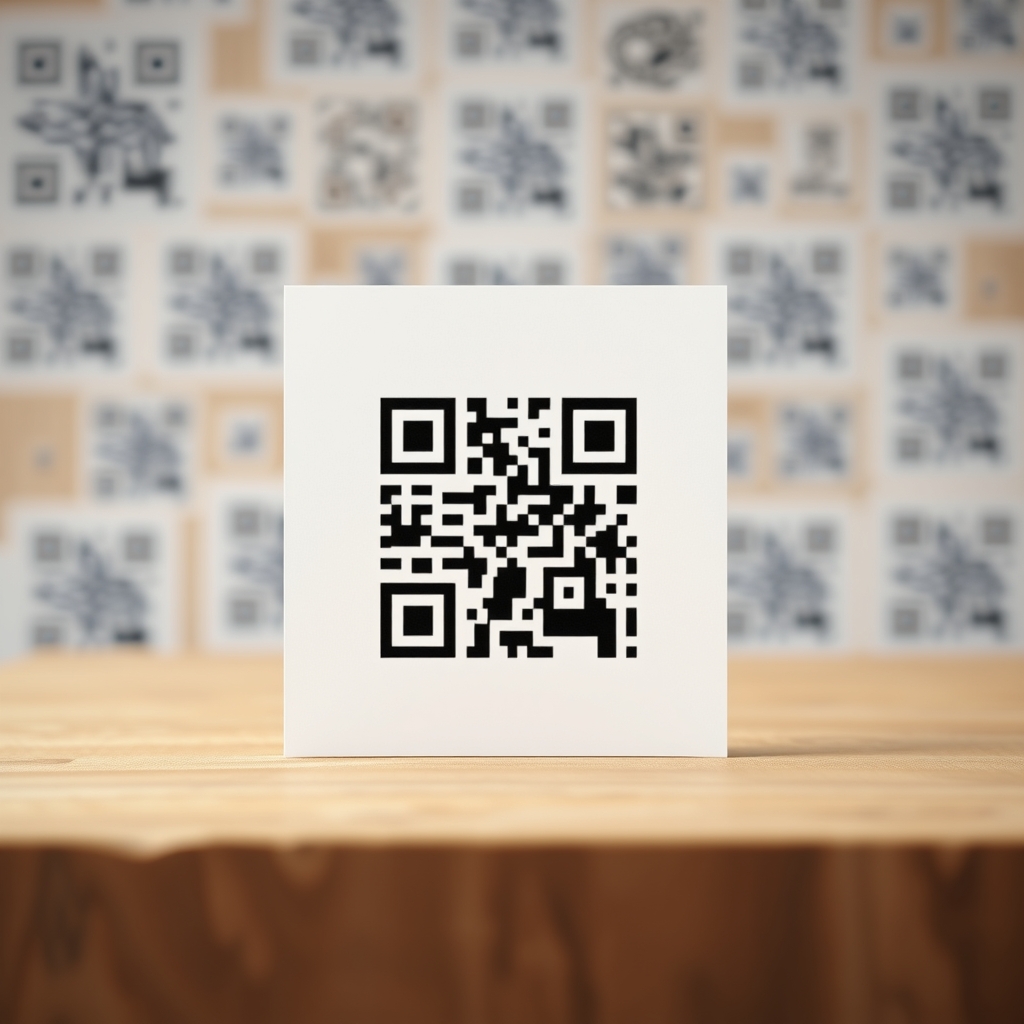Choosing Between QR Code Builder API and QR Code Generator API: Which One Fits Your Needs?

In the digital age, QR codes have become an essential tool for businesses and developers looking to enhance user engagement and streamline processes. Two prominent APIs that facilitate QR code generation are the QR Code Builder API and the QR Codes Generator API. This blog post will provide a comprehensive comparison of these two APIs, exploring their features, use cases, performance, and scalability, ultimately guiding you on which API to choose based on your specific needs.
Overview of Both APIs
QR Code Builder API
The QR Code Builder API is designed to simplify the generation of QR codes for various applications. It allows users to dynamically create QR codes with custom content and styling options, making it ideal for integration into websites, mobile apps, and other digital platforms. This API supports multiple QR code formats and encoding standards, providing flexibility for diverse use cases such as marketing campaigns, ticketing systems, and contactless payments.
QR Codes Generator API
The QR Codes Generator API enables users to create personalized QR codes effortlessly. It is straightforward to implement and use, allowing developers to customize QR codes with the desired data. This API is particularly useful for businesses looking to guide users to specific web pages, share portfolios, or provide access to menus in restaurants. With its ease of use, it caters to a wide range of applications.
Side-by-Side Feature Comparison
Key Features of QR Code Builder API
One of the standout features of the QR Code Builder API is its Creator functionality. This feature returns a QR code image in base64 format based on specified input parameters. Developers can customize the QR code's size, error correction level, and color scheme, allowing for tailored designs that meet specific branding requirements.
iVBORw0KGgoAAAANSUhEUgAAAPoAAAD6CAIAAAAHjs1qAAAYT0lEQVR4nO2dfVBVVffHz0GuXBFELiAQipU4iYKkJvhCj6lpar4N2KjpkG/T5PgHjjJZoZOvM02G6eSk+VJj2qQFvlS+jGVhA42JNl7AtIRRVAREvKK8XLhyz+8Pe56Z7l6b396es49H9/r8uWaz9jrnfrl3n3XWXlvVNE1BEDnwe9QBIIh5oNwRiUC5IxKBckckAuWOSATKHZEIlDsiESh3RCJQ7ohEoNwRiUC5IxKBckckAuWOSATKHZEIlDsiESh3RCJQ7ohEoNwRiUC5IxKBckckAuWOSATKHZEIlDsiESh3RCJQ7ohEoNwRiUC5IxKBckckAuWOSIS/ONcrV64sKioS518n2dnZw4YN8zG6XK7Zs2eTgzMyMqZPny4ijLKysszMTBGeFUXZs2dPaGioj/G3335bt26doBn1M3jw4JUrVwpyLlDuBQUFJ06cEOdfJ3PmzCGNbrf7yJEjpH3w4MGCwnC5XOCMhuB2u0ljZWWluBn109LSIs65wMVMQECAOOf66dChA2lUVRUcbLPZBIXh5yfwIwAvB7xw6yBUNrh2RyQC5Y5IBModkQiU+yPG4ivpJwyBmRl4Pn//p556yswZW1paampqzJyxsbGxrq6OcXBtbW1sbCxpr6ura2xs9DH6+fl1796dPRKu/6XIyEiTsws3bty4f/++mTOaLfeYmJgrV66YOeOpU6eGDh1q5oz79+/PyMhgHPz8889XVFSQ9oyMjN27d/sYQ0NDwcGGcPDgwSFDhghyDvL000+LuxwQsxcz5p9r2dbWZvKMXLlF2hew1+sF7eJuoPk3ynwx4NodkQiUOyIRKHdEIlDuiESg3JngytB5PB5xkSB6MDsRSeP7778/efKkTidZWVlRUVGGxOPDoUOHqqurfYyqqq5atSowMNDHnpKS8tFHH5FONm7ceP36dRHhiaO6uhq8Fi5GjBgx...Key Features of QR Codes Generator API
The QR Codes Generator API offers a Generator feature that allows users to create QR codes containing any text, particularly URLs that redirect users to specific websites. This feature is crucial for businesses that want to provide easy access to their online content. The API generates a QR code based on the input data, ensuring that the resulting QR code accurately reflects the information provided.
<svg xmlns="http://www.w3.org/2000/svg" xmlns:xlink="http://www.w3.org/1999/xlink" id="QRCode" viewBox="0 0 200 200" version="1.1">
<g transform="translate(24.242 24.242) scale(0.606 0.606)">
<rect width="250" height="250" clip-path="url(#main_clip)" fill="black" />
</g>
<defs>
<path d="M0 0h10v10H0z" id="m" />
<path d="M0 0h30v30H0z" id="i" />
<path d="M0 0h70v70H0zm10 10v50h50V10z" id="o" />
<clipPath id="main_clip">
<use xlink:href="#o" transform="translate(0 0)" />
<use xlink:href="#o" transform="translate(180 0)" />
<use xlink:href="#o" transform="translate(0 180)" />
<use xlink:href="#i" transform="translate(20 20)" />
<use xlink:href="#i" transform="translate(200 20)" />
<use xlink:href="#i" transform="translate(20 200)" />
<use xlink:href="#m" transform="translate(80 0)" />
<use xlink:href="#m" transform="translate(90 0)" />
<use xlink:href="#m" transform="translate(100 0)" />
<use xlink:href="#m" transform="translate(110 0)" />
<use xlink:href="#m" transform="translate(130 0)" />
</clipPath>
</defs>
</svg>Example Use Cases for Each API
Use Cases for QR Code Builder API
The QR Code Builder API is versatile and can be used in various scenarios:
- Marketing Campaigns: Businesses can generate QR codes that link to promotional content, driving traffic to their websites or social media pages.
- Event Ticketing: QR codes can be used for digital tickets, allowing for easy scanning at entry points.
- Contactless Payments: Retailers can implement QR codes for payment processing, enhancing customer convenience.
Use Cases for QR Codes Generator API
The QR Codes Generator API is particularly effective in the following scenarios:
- Restaurant Menus: QR codes can direct customers to digital menus, reducing physical contact and enhancing the dining experience.
- Portfolio Sharing: Professionals can create QR codes that link to their online portfolios, making it easy for potential clients to view their work.
- Product Packaging: Brands can include QR codes on packaging to provide additional product information or promotional offers.
Performance and Scalability Analysis
Both APIs are designed to handle a significant volume of requests, making them suitable for businesses of all sizes. The QR Code Builder API excels in scenarios requiring dynamic QR code generation, as it allows for real-time customization based on user input. This flexibility is crucial for applications that need to adapt quickly to changing data.
On the other hand, the QR Codes Generator API is optimized for straightforward QR code creation, making it an excellent choice for businesses that require quick and easy implementation without extensive customization. Its performance is reliable, ensuring that users receive accurate QR codes based on their input data.
Pros and Cons of Each API
QR Code Builder API
Pros:
- Dynamic QR code generation with extensive customization options.
- Supports various data types, enhancing versatility.
- Ideal for complex applications requiring real-time data integration.
Cons:
- May require more development effort to implement advanced features.
- Customization options may overwhelm users looking for simplicity.
QR Codes Generator API
Pros:
- Simple and straightforward implementation.
- Quick generation of QR codes with minimal input.
- Ideal for businesses needing basic QR code functionality.
Cons:
- Limited customization options compared to the QR Code Builder API.
- Less suitable for applications requiring dynamic data integration.
Final Recommendation
Choosing between the QR Code Builder API and the QR Codes Generator API ultimately depends on your specific requirements:
- If you need a robust solution that allows for extensive customization and dynamic QR code generation, the QR Code Builder API is the better choice.
- For straightforward applications where ease of use and quick implementation are priorities, the QR Codes Generator API is more suitable.
In conclusion, both APIs offer valuable features for QR code generation, and understanding their strengths and weaknesses will help you make an informed decision based on your project needs.
Looking to optimize your QR Code Builder API integration? Read our technical guides for implementation tips.
Want to try QR Codes Generator API? Check out the API documentation to get started.





